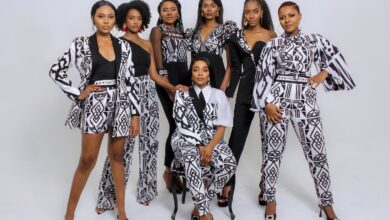Business Partners Limited Invites Entries For The Annual Entrepreneur Of The Year Awards

Business Partners Limited Invites Entries For The Annual Entrepreneur Of The Year Awards. Small and medium-sized enterprises (SMEs) are the backbone of South Africa’s economy, contributing over60% of the GDP and employing more than half the workforce. The Business Partners Limited Q1 2024 SME Confidence Index shows a positive outlook, with a rise in confidence for both business growth (83%, up 12% year-on-year) and a conducive local economy (69%, up 13% year-on-year).
However, challenges like crime, cash flow, and economic conditions persist. “Much like the Protea, South Africa’s national flower, the country’s entrepreneurs and SME owners flourish in difficult conditions, as evidenced by their resilience in the face of these and other challenges,” says David Morobe, executive general manager for Impact Investing at Business Partners Limited.
Celebrating homegrown businesses
To recognise the value and contribution of SMEs that continue to flourish in the country’s dynamic and challenging social and economic landscape, Business Partners Limited has opened entries for the 36th annual Entrepreneur of the Year® awards.
The awards celebrate SMEs and entrepreneurs that have overcome challenges, adapted to market changes, and achieved a level of excellence in their respective fields. Entries close on 31 August 2024.
Open to entrepreneurs who own small and medium-sized enterprises in South Africa, categories include Emerging Entrepreneur, Small Business Entrepreneur, and Medium Business Entrepreneur.
Five finalists will be chosen in each category and the finalist who employs the most individuals will be awarded the Job Creator prize. After the judging process has taken place, the winners will be announced at an awards ceremony in November 2024 where the overall Entrepreneur of the Year will be awarded.
“The aim is to celebrate the vision, passion, innovation, and commitment of individuals running successful SMEs in the country through recognition and a share of R2m that includes cash prizes, mentorship support and exposure for the businesses,” shares Morobe.
“The Business Partners Entrepreneur of the Year awards are more than just an awards ceremony,” he emphasises. “They are a platform to celebrate and promote entrepreneurial excellence, highlighting success stories that inspire others. We aim to motivate both seasoned and aspiring entrepreneurs by showcasing best practices and providing resources to help them reach new heights.”
“Moreover, it allows us to share the journey and impact of these businesses, encouraging young people to consider entrepreneurship as a rewarding career path. Ultimately, by amplifying the voices of entrepreneurs, we strive to influence policymakers and foster an ecosystem where SMEs are supported.”
Bloom where you’re planted
For Lindiwe Nkuna-Kgopa, founder of Lindiwe Sanitary Pads and last year’s Emerging Business Entrepreneur of the Year, funding was a major hurdle. “When I’d approach funders, they’d turn down my applications because I didn’t have a manufacturing background and had never set foot in a factory, so they said, ‘you don’t have the technical know-how – you are not bankable’.”
Networking and support from organisations dedicated to women’s economic empowerment led to her securing funding for a sanitary pad manufacturing machine capable of churning out 350 pads per minute – enabling the company to ramp up production capacity to meet growing demand. Nkuna-Kgopa now plans to elevate output even further.
Enter at www.eoy.co.za by 31 August 2024.




